
Hogan Lovells 2024 Election Impact and Congressional Outlook Report
 Search
Search


 Search
Search

In an important reversal for owners of color trademarks, the U.S. Court of Appeals for the Federal Circuit holds that multicolored product packaging can qualify as inherently distinctive trade dress without a specific peripheral shape. The decision provides critical insight into the Federal Circuit’s interpretation of Supreme Court decisions concerning color trademarks, product packaging, and product configuration claims. Trademark owners interested in registering distinctive colors as product packaging trade dress should take note.
The Federal Circuit recently schooled the Trademark Trial and Appeal Board (TTAB) on its interpretation of Supreme Court and other precedent concerning color trademarks, product packaging, and product configuration claims. The case is In re Forney Industries, Inc., No. 19-1073 (Fed. Cir. Apr. 8, 2020).
Forney Industries sells welding and machining tools and accessories. Much of its packaging features a solid black stripe atop of a fade of colors beginning with yellow and gradually transitioning to red. Forney sought registration of the mark depicted below:
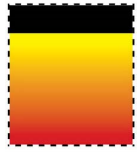
As Forney described in its application, the mark consists of the colors red into yellow with a black banner located near the top as applied to packaging for the goods. As can be seen from Forney’s submitted specimens, the colors are applied to varying shapes and varying degrees of red fading into yellow:
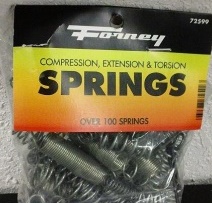
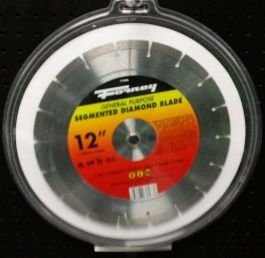
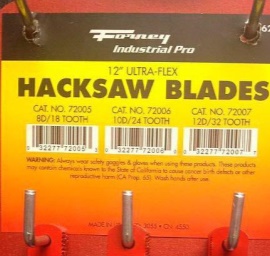
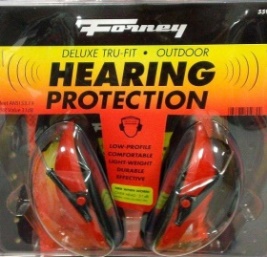
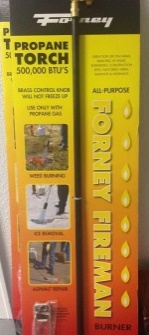
Notably, the Federal Circuit did not address whether Forney’s use of the mark as shown in the specimens is consistent, an issue raised by the TTAB in its decision.
Forney maintained that its trademark was inherently distinctive for product packaging claiming multiple colors and thus registrable without proof of secondary meaning. The USPTO refused registration on the grounds that color marks are never inherently distinctive and can only be registered on the Principal Register with sufficient proof of acquired distinctiveness. Forney appealed to the TTAB.
The TTAB affirmed the Examining Attorney’s refusal. Relying on the Supreme Court’s decisions in the Two Pesos, Qualitex, and Wal-Mart v. Samara Bros. cases, it held that when assessing marks consisting of color(s), there is no distinction between colors applied to products themselves and colors applied to product packaging, noting that neither can qualify as inherently distinctive. The TTAB also found “no legal distinction” between a mark consisting of a single color and one consisting of multiple colors without additional elements such as shapes or designs. It concluded that a mark consisting of color, whether single or multiple colors, which is not combined with a distinctive well-defined shape, pattern, or other distinctive design, cannot qualify as inherently distinctive.
The Federal Circuit vacated the TTAB’s decision, finding that it had erred in two ways: (1) by concluding “a multi-color mark can never be inherently distinctive”; and (2) by concluding (presumably in the alternative) “product packaging marks that employ color cannot be inherently distinctive in the absence of a well-defined peripheral shape or border.” Opinion at *2.
In its decision, The Federal Circuit notes that the Tenth Circuit had previously considered a mark owned by Forney similar to the one at issue here and concluded that “the use of color in product packaging can be inherently distinctive” in certain circumstances. Forney Indus., Inc. v. Daco of Missouri, Inc., 835 F.3d 1238, 1240 (10th Cir. 2016). The mark considered by the Tenth Circuit is described as follows:
The Forney Color Mark is a combination and arrangement of colors defined by a red into yellow background with a black banner/header that includes white letters. More specifically, the Forney Color Mark includes red and yellow as the dominate [sic] background colors. Red typically starts at the bottom of the packaging, continues up the packaging and may form borders. Red may also be used in accents including but not limited to lettering. Yellow typically begins higher than the red and continues up the packaging. Yellow may also provide borders and be used in accents including but not limited to lettering. A black banner is positioned toward the top of the package label or backer card. Black may also be used in accents including but not limited to lettering. White is used in lettering and accents.
However, the Tenth Circuit concluded that Forney’s description of the mark was too vague to satisfy the Tenth Circuit’s “requirement that the color scheme be used in combination with a well-defined shape, pattern, or other distinctive design” and that it had “failed to establish an inherently distinctive trade dress.” Id. at 1248, 1253.
Early in its own decision, the Federal Circuit disagrees with the TTAB’s interpretation of Supreme Court precedent, noting that neither the Supreme Court nor the Federal Circuit had ever directly addressed the question of whether a multicolor mark on product packaging can be inherently distinctive. The Federal Circuit reviewed the Supreme Court decisions and examined the specific factual questions raised by:
Two Pesos (whether trade dress can be inherently distinctive; answered in the affirmative);
Qualitex (whether a single color applied to the design of a product itself was capable of protection at all; answered in the affirmative, only upon a showing of secondary meaning); and
Wal-Mart v. Samara Bros. (whether product design/configuration can ever be inherently distinctive; answered in the negative).
The Federal Circuit notes that Qualitex did not address the questions of either (a) inherent distinctiveness of a single color as applied to product packaging trade dress, or (b) inherent distinctiveness of a multi-color mark as applied to product packaging trade dress. The Federal Circuit stresses that its prior decisions, and those of the 10th Circuit, had found that the use of color in product packaging can be inherently distinctive in appropriate circumstances and faults the TTAB for failing to consider whether Forney’s mark satisfied those circumstances.
The Federal Circuit also rejects as unsupported by any case law the TTAB’s requirement that a color may only be inherently distinctive when used with a distinctive peripheral shape or border. The Federal Circuit points the TTAB towards the factors in the Federal Circuit’s Seabrook test – analyzing whether:
(1) the trade dress is a common basic shape or design;
(2) unique or unusual in the field;
(3) a mere refinement of a commonly-adopted and well-known form of ornamentation for a particular class of goods; and/or
(4) whether it is capable of creating a commercial impression distinct from any accompanying word – as offering different ways to determine whether consumers in the relevant market would perceive the trade dress as an indicator of source.
Finally, it notes that Forney was not attempting to preempt the use of the colors contained in the mark per se (i.e., black, yellow, red) but only the particular combination and arrangement of those colors in the particular design depicted in its drawing, that is, a black stripe next to a gradation of colors. The Federal Circuit therefore vacated and remanded the case to the Board to consider whether, for the use proposed, Forney’s mark could qualify as inherently distinctive under the Seabrook factors.
The Federal Circuit’s decision is significant in pushing back against the TTAB’s increasingly narrow view of what can qualify as inherently distinctive for registrability purposes.
On remand, it will be interesting to see whether – in addition to how the USPTO applies Seabrook to this case –the USPTO refocuses on the significant variation in Forney’s use of its trade dress product to product (as noted by the 10th Circuit) to justify a “phantom mark” refusal against Forney’s application. Marks with changeable or “phantom’ elements are unregistrable as they would “‘encompass too many combinations and permutations to make a thorough and effective search possible’ and, therefore, would not provide adequate notice to the public.” TMEP § 1202.05(c); In re Int'l Flavors & Fragrances Inc., 183 F.3d 1361, 1368 (Fed. Cir. 1999).
Equally interesting is that the USPTO obviously knew about the 10th Circuit’s prior finding of the lack of inherent distinctiveness of a highly similar trade dress but did not acknowledge that prior adjudication, choosing instead to rely on a divergent interpretation of Supreme Court and Federal Circuit precedent.
In the end, as this decision demonstrates, the inherent distinctiveness of trade dress and color marks remains a complicated and confusing area of law with many unanswered questions. The Federal Circuit’s reliance on the Seabrook test, however, offers some glimmer of clarity.
Authored by Julia Anne Matheson, Anna Kurian Shaw, Brendan C. Quinn